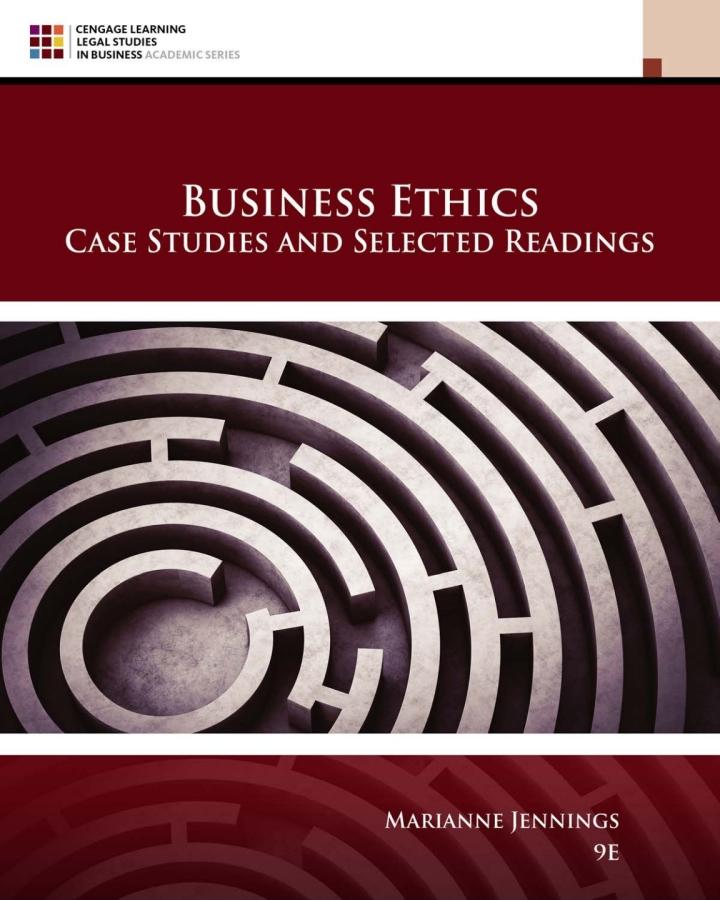There are four levels of ethical issues, and there are different root causes for these levels. The
Question:
There are four levels of ethical issues, and there are different root causes for these levels. The levels of lapses as well as the prevention tools are depicted in Figure 3.4, followed by discussion and examples.
There is perhaps no better illustration of how these layers work than to explore the issue of the use of performance-enhancing drugs in sports. Figure 3.5 shows how the four layers exist in the use of performance-enhancing drugs in sports.

or documents (signing off on your annual ethics training when you did not complete it); misrepresenting information to customers, shareholders, and/or creditors; letting someone else take the blame for a mistake you made at work; appropriation of trade secrets from a former employer or competitor; violation of company rules, such as working while impaired; and embezzlement. All of these activities can harm the company in terms of negative publicity, regulatory relationships, litigation, and loss of customers. However, these company harms spring from individual choices.
When an athlete decides to take performance-enhancing drugs, something prohibited within the sport, it is initially a desire on the part of that individual athlete to perform beyond the levels of other team members as well as other athletes on other teams.
The defining characteristic of individual ethical lapses is that the individual makes the choice. There are no externalities that serve to cloud the individual's decision processes. Company and industry practices and pressures are not afoot at this level, as the employees make their decisions. Companies and organizations can also stop these individual actions through discipline. Once the individual is caught embezzling, or, in the case of sports, using performance-enhancing drugs, the termination of employment, or the end of the contract in the case of a professional athlete, is the signal to others who are making individual choices that the conduct is not acceptable in the organization. Without enforcement, however, the individual choices ripen into something more.
Discussion Questions 1. When Congress held the baseball steroid hearings, those in attendance included the parents of young baseball players who had taken their lives after using steroids in order to remain competitive in high school and college baseball. Explain why young players and their parents are stakeholders.
2. Former MLB Commissioner Bud Selig offered the following in his testimony: I should also say a word about our players. For some time now the majority of our great and talented athletes have deeply - and rightly resented two things. They have resented being put at a competitive disadvantage by their refusal to jeopardize their health and the integrity of the game by using illegal and dangerous substances. And they have deeply - and rightly - resented the fact that they live under a cloud of suspicion that taints their achievements on the field.Using his statement, explain how unethical behavior hurts those who comply with the rules. Apply these same principles to academic dishonesty.
3. When he was inducted into Baseball's Hall of Fame in 2005, Ryne Sandberg said, "I didn't play the game right because I saw a reward at the end of the tunnel. I played the game right because that's what you're supposed to do." 169 Mark McGwire was eligible for the Hall of Fame in 2007. Barry Bonds broke Hank Aaron's home-run record in 2007, but did so before he was indicted for perjury. The debate over their induction into the Hall of Fame continues. Sports Illustrated has noted that Barry Bonds could end up "in baseball purgatory with Pete Rose." 170 What lessons about ethics do the McGwire and Bonds outcomes and controversy provide?
4. In August 2012, the Justice Department and MLB began a joint investigation of San Francisco Giants All-Star outfielder Melky Cabrera for possible use of synthetic testosterone. Jeff Novitzky, a criminal investigative agent for the FDA, who was the lead investigator in the BALCO scandal that brought the 2006 players' use of steroids to light, headed up the investigation. They found that Mr. Cabrera had developed a website to sell a nonexistent product with the idea of establishing that he inadvertently took the synthetic testosterone. \({ }^{171}\) However, Mr. Cabrera was given a 50 -game suspension and a raise for the following year of play. \({ }^{172}\) What messages did the team and ML8 send with the investigation and sanctions? What layers are we dealing with now? The players' union has said that it wants the game clean. What role can the union play in keeping the game clean? Is the union a stakeholder?
5. The sport of tennis, like baseball and cycling, is experiencing a crisis in testing athletes, results, and common practice. In March 2016, Maria Sharapova failed a drug test for the Australian Open. She tested positive for meldonium, a drug that was added to the banned list in September 2015. The ban took effect January 1, 2016. Ms. Sharapova said she received the notice about the addition of banned substances, but she did not check the list. Within a month, the World AntiDoping Agency (WADA) revealed that 140 athletes have tested positive for meldonium. \({ }^{173}\) An earlier study found that athletes in 15 of 21 sports tested positive, and there were 13 medalists among those who tested positive. Of the 662 athletes tested, 525 had declared on their forms that they used medication or a nutritional supplement. \({ }^{174}\) Some allege that there is no evidence that meldonium enhances performance. Both others wonder why so many athletes are taking a drug that is used to treat heart problems. Is there a pattern among athletes on performance-enhancing drugs? Is there an "everyone does it" rationalization culture?
Step by Step Answer:

Business Ethics Case Studies And Selected Readings
ISBN: 9780357453865
9th Edition
Authors: Marianne M. Jennings





